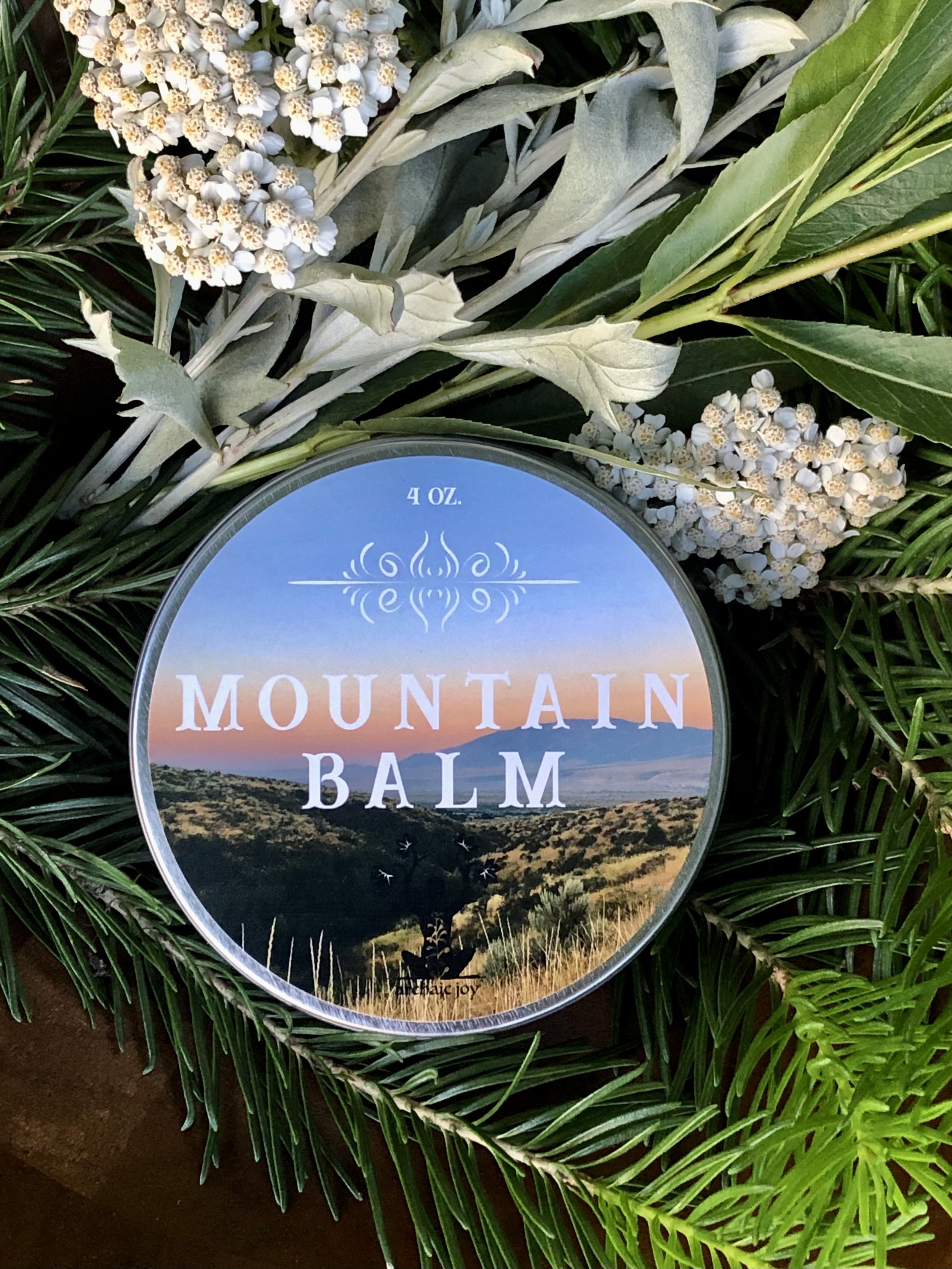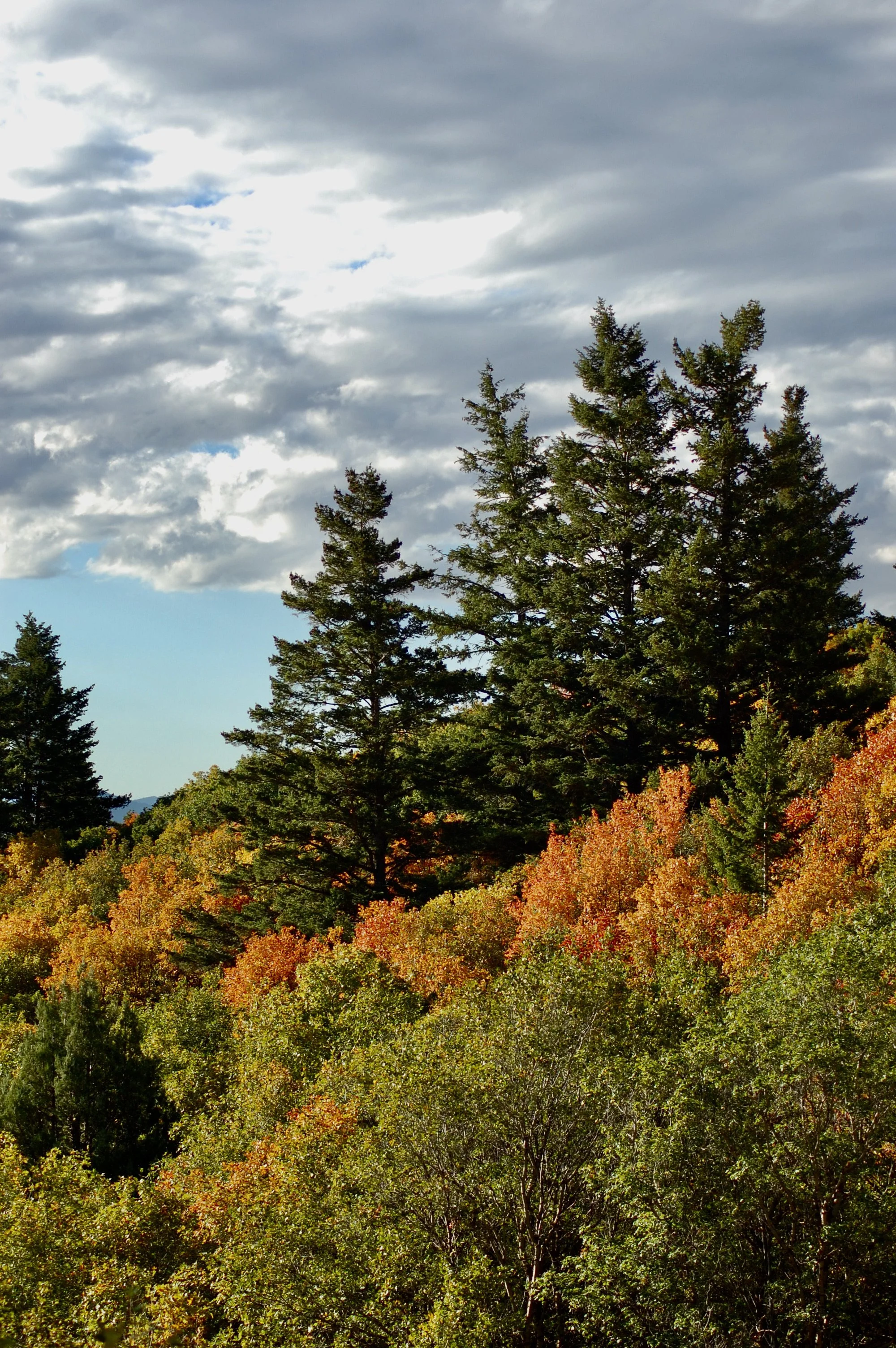Mountain Balm





Mountain Balm
Protective Yarrow, sacred Mugwort, friendly Fir and whispering Willow ~ infused in organic Olive oil with an added, grounding base note of Juniperis virginia essential oil. Local beeswax, and a tiny bit of organic alcohol as potentizing extractive round out this Mountain Balm blend. It’s like, “a hug from the forest.”
Use for extra moisturizing during dry days, exhausted muscles after a long hike or powerful workout, apply when a little extra individual care is in order…helpful on owies & bruises, or gently rub on the temples when needing a break. Rub into sore or cracked feet. Good for creaky knees and tired elbows.
As always, when using a new product, especially if you have sensitive skin, do a little spot test on the inside of your arm. Avoid heavy sun exposure directly after applying. Let soak in before dressing, or use a lightly damp towel on skin to dab off excess if needing to dress right after application.
Yarrow is a plant I’ve longed worked with. It is a very, very common wild plant and grows readily in the garden. I use the white, wild variety although I’ve heard that one can use the colored cultivars in similar manner (albeit I bet the medicine isn’t as potent). But in a pinch, it’s worth a shot. As a styptic, Yarrow helps to stem bleeding. Yarrow is an antiseptic, anti-inflammatory, cleansing, and incredibly healing plant. Other actions include: analgesic, antibacterial, anti-catarrhal, digestive, diuretic, emmenagogue, expectorant, febrifuge, hepatic, hypoglycemic, hypotensive and stimulant. (from the Boreal Herbal by Beverley Gray) Achillea millefolium is the Latin name, and refers to Achilles and how his mother dipped him in a vat of Yarrow tea in order to protect him in battle, but missed his heel as she was holding it, thus Achilles heel.
Western Mugwort (Wild Sage) is actually a newer species of Artemesia I’ve had the pleasure of encountering. I worked with her cousin, A. tilesii for many years (it was a native of SE Alaska) and have found they have similar properties. Namely, their use for colds, bruises, sore/smelly feet, muscle and joint pain, itching, and eczema. W. Mugwort also can be used for fevers and nosebleeds. According to Linda Kershaw in Edible & Medicinal Plants of the Rockies (excellent book by the way): “Sage plants and smudges repel insects, and these aromatic herbs were also believed to drive away evil. They were widely used in religious ceremonies, both in smoking mixtures and as incense for purifying implements and people.”
Fir has been used for “treating cuts, wounds, ulcers, sores, bleeding gums and skin infections.” (Kershaw). The warming nature of Fir helps to relax tight muscles. I find there’s nothing quite like the scent of the Fir tree out in the forest. Or the whiff of one on a warm summer’s breeze in the neighborhood. I’ve found Fir to be such a friendly ally. The sticky resin can be used to pull out a splinter (tried it, it works!). You can chew it as gum (super sticky, probably super helpful if you had a toothache and needed some relief ASAP). Craft the resin into a very warming oil or salve. Wonderful on the cold nights of winter after a warm bath. The needles make a lighter, but still stimulating oil as well. “The smell of Fir is very uplifting and can help people struggling with fatigue. The boughs can be used in a sauna, steam bath, or placed in a pot of water on a wood stove.” (Gray) That last bit is a favorite of mine to do in the winter months…
Last but certainly not least, we have Willow (Salix spp.). Willow has been used for ages, specifically for pain, inflammation as well as fever. Used as a massage oil, Willow “can help relieve pain and inflammation from lower back pain, sciatic nerve pain, osteoarthritis, tendonitis, bursitis, gout, muscle aches, sprains and strains.” (Grey) Topical use on “cuts, abrasions, wounds of all sorts, insect bites and stings” is also mentioned by Grey. I like to use Willow, often harvested in the spring (but you can in the autumn as well), not only for its abundant actions, but also because it has a mild, almost sweet scent to me when infused in oil. It is a tree that readily grows in moist areas, often around the little creeks where I live.
(Please note that the plants used in this balm were ethically wild harvested. You can see the guidelines and thoughts about this here: https://archaicjoy.com/musings/ethical-foraging)
Virginia cedarwood essential oil is a base note steam distilled from the wood of Juniperis virginiana. The woody and balsamic aroma is warm, and comforting. Also known as Eastern red cedar. I like this quote from Edens Garden: “Applied topically, Virginian Cedarwood is a powerful anti-inflammatory, and can help unknot tense, sore muscles. When you need to make a difficult decision, call on this essential oil for clarification and support.”
As always, when using a new product, especially if you have sensitive skin, do a little spot test on the inside of your arm. Avoid heavy sun exposure directly after applying. Let soak in before dressing, or use a lightly damp towel on skin to dab off excess if needing to dress right after application.
So why do this, why herbal body oiling? Well, when the skin is dry, the body tenses up and the energy doesn’t flow as well; body oiling or spot massage can help release muscular tension, while also moisturizing and nourishing the skin. Body oiling increases circulation, stimulates the lymph which aids the body in healing. When you use an infused herbal oil, the benefits of the herbs are also incorporated into your body. When we anoint ourselves, using herbal oils and balms/salves, we are practicing self-love and self-care, and we restore and replenish our body and soul.